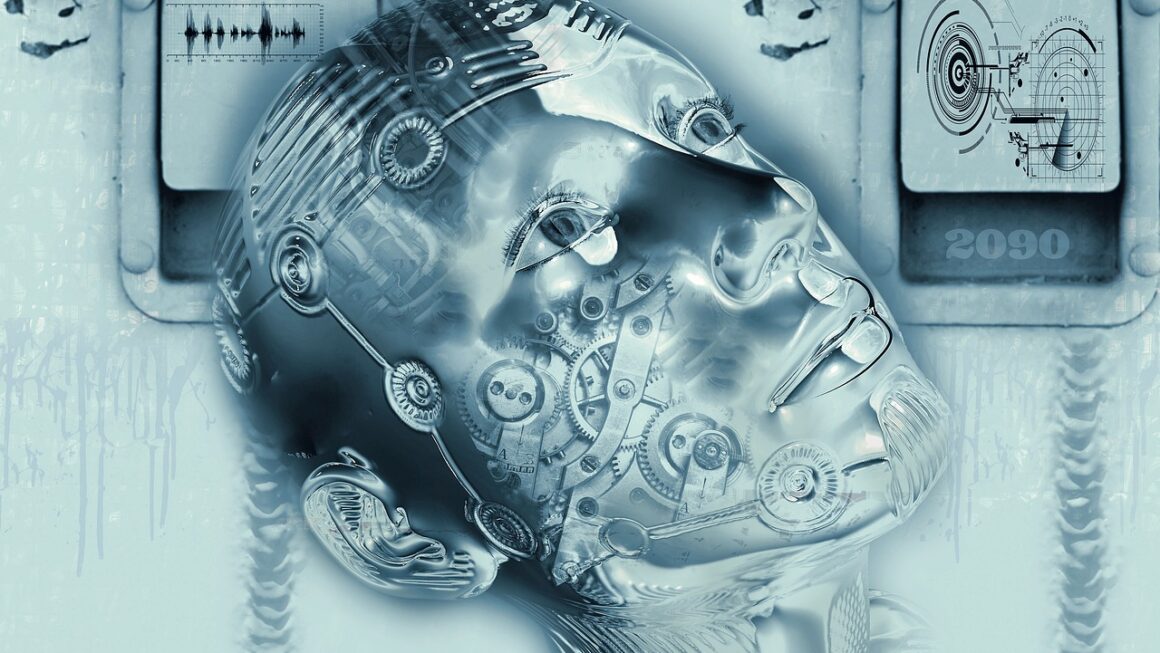The rise of Artificial Intelligence (AI) is no longer a futuristic fantasy; it’s a present-day reality transforming businesses across all sectors. From automating mundane tasks to providing profound insights, AI offers unprecedented opportunities for growth, efficiency, and innovation. This blog post dives deep into how AI is revolutionizing the business landscape, providing you with a comprehensive understanding of its applications and benefits. Get ready to explore the world of AI and unlock its potential for your organization.
The Transformative Power of AI in Business
AI is rapidly changing how businesses operate, offering a wide range of applications that can optimize processes, enhance customer experiences, and drive revenue growth. Its ability to analyze vast amounts of data, identify patterns, and make intelligent decisions is transforming traditional business models and creating new possibilities.
Understanding the Scope of AI
AI encompasses various technologies, including machine learning (ML), natural language processing (NLP), computer vision, and robotics. Each of these branches offers unique capabilities that can be leveraged to solve specific business challenges.
- Machine Learning (ML): Enables systems to learn from data without explicit programming, allowing them to make predictions and improve performance over time.
- Natural Language Processing (NLP): Focuses on enabling computers to understand and process human language, facilitating communication and information extraction.
- Computer Vision: Empowers machines to “see” and interpret images and videos, enabling applications such as object recognition and quality control.
- Robotics: Integrates AI with physical robots to automate tasks in manufacturing, logistics, and other industries.
The Benefits of AI Adoption
Implementing AI can bring numerous benefits to businesses, including:
- Increased Efficiency: Automating repetitive tasks frees up human employees to focus on more strategic and creative work.
- Improved Decision-Making: AI-powered analytics can provide insights that lead to better-informed decisions and more effective strategies.
- Enhanced Customer Experience: AI-driven chatbots and personalized recommendations can improve customer satisfaction and loyalty.
- Reduced Costs: Automation and optimization can lead to significant cost savings across various departments.
- Competitive Advantage: Businesses that embrace AI can gain a competitive edge by innovating faster and delivering superior products and services.
AI-Powered Automation and Efficiency
One of the most significant impacts of AI is its ability to automate tasks and streamline workflows. This can lead to significant improvements in efficiency, productivity, and cost savings.
Automating Repetitive Tasks
AI can automate various repetitive tasks, such as data entry, invoice processing, and customer service inquiries. This frees up employees to focus on more complex and strategic activities, improving overall productivity.
- Example: RPA (Robotic Process Automation) tools use AI to automate rules-based tasks across different software systems, reducing manual effort and errors.
- Example: Automated invoice processing can extract data from invoices, match them with purchase orders, and automatically approve payments, saving time and reducing the risk of errors.
Optimizing Supply Chain Management
AI can optimize supply chain management by predicting demand, optimizing inventory levels, and improving logistics. This can lead to significant cost savings and improved customer satisfaction.
- Example: AI-powered forecasting tools can analyze historical sales data, market trends, and other factors to predict future demand with greater accuracy.
- Example: AI can optimize delivery routes to minimize transportation costs and improve delivery times.
Improving Manufacturing Processes
AI can improve manufacturing processes by monitoring equipment performance, identifying potential problems, and optimizing production schedules. This can lead to increased efficiency, reduced downtime, and improved product quality.
- Example: Predictive maintenance systems use AI to analyze sensor data from equipment and predict when maintenance is needed, preventing costly breakdowns.
- Example: Computer vision systems can inspect products for defects in real-time, ensuring that only high-quality products are shipped to customers.
Enhancing Customer Experience with AI
AI is transforming how businesses interact with their customers, enabling personalized experiences and improved customer service.
Personalized Marketing and Recommendations
AI can analyze customer data to deliver personalized marketing messages and product recommendations. This can lead to increased engagement, higher conversion rates, and improved customer loyalty.
- Example: E-commerce websites use AI to recommend products based on a customer’s browsing history, purchase history, and demographics.
- Example: Marketing automation platforms use AI to send personalized email campaigns based on customer behavior and preferences.
AI-Powered Chatbots and Virtual Assistants
AI-powered chatbots and virtual assistants can provide instant customer support, answer questions, and resolve issues. This can improve customer satisfaction and reduce the workload on human customer service agents.
- Example: Chatbots can answer common customer inquiries, such as order status updates, product information, and troubleshooting tips.
- Example: Virtual assistants can guide customers through complex processes, such as setting up an account or filing a claim.
Sentiment Analysis and Customer Feedback
AI can analyze customer feedback from surveys, reviews, and social media to understand customer sentiment and identify areas for improvement. This can help businesses improve their products, services, and customer experience.
- Example: Sentiment analysis tools can automatically classify customer feedback as positive, negative, or neutral, providing insights into customer satisfaction.
- Example: AI can identify common themes and issues in customer feedback, allowing businesses to prioritize improvements.
Data-Driven Decision Making with AI
AI’s ability to analyze large datasets and identify patterns enables businesses to make better-informed decisions and develop more effective strategies.
Predictive Analytics
Predictive analytics uses AI to forecast future trends and outcomes based on historical data. This can help businesses make proactive decisions and mitigate risks.
- Example: Financial institutions use predictive analytics to assess credit risk and detect fraudulent transactions.
- Example: Retailers use predictive analytics to forecast demand and optimize inventory levels.
Business Intelligence and Reporting
AI can automate the process of gathering, analyzing, and reporting on business data, providing stakeholders with real-time insights into key performance indicators (KPIs).
- Example: AI-powered dashboards can display key metrics in an easy-to-understand format, allowing managers to track performance and identify areas for improvement.
- Example: Automated report generation can save time and effort by creating reports on a regular basis.
Identifying Market Trends and Opportunities
AI can analyze market data, social media trends, and competitor activities to identify emerging trends and opportunities. This can help businesses develop innovative products and services and stay ahead of the competition.
- Example: AI can analyze social media conversations to identify emerging trends and consumer preferences.
- Example: AI can monitor competitor pricing and promotions to identify opportunities to gain market share.
Addressing Challenges and Ethical Considerations
While AI offers tremendous potential, it’s important to address the challenges and ethical considerations associated with its implementation.
Data Privacy and Security
AI systems rely on large amounts of data, which raises concerns about data privacy and security. Businesses must implement robust security measures to protect sensitive data from unauthorized access and ensure compliance with data privacy regulations.
- Tip: Implement data encryption, access controls, and regular security audits to protect sensitive data.
- Tip: Comply with relevant data privacy regulations, such as GDPR and CCPA.
Bias and Fairness
AI algorithms can be biased if they are trained on biased data. This can lead to unfair or discriminatory outcomes. Businesses must take steps to identify and mitigate bias in their AI systems.
- Tip: Use diverse datasets to train AI algorithms and regularly audit the algorithms for bias.
- Tip: Implement fairness metrics to measure and track the fairness of AI systems.
Job Displacement
The automation of tasks by AI can lead to job displacement. Businesses must address this challenge by providing retraining and upskilling opportunities for employees.
- Tip: Invest in training programs to help employees develop the skills needed to work alongside AI systems.
- Tip: Create new roles and opportunities for employees to focus on higher-level tasks that require human skills, such as creativity, critical thinking, and emotional intelligence.
Conclusion
AI is revolutionizing the business world, offering unprecedented opportunities for growth, efficiency, and innovation. By understanding the various applications of AI and addressing the associated challenges, businesses can unlock its full potential and gain a competitive advantage in today’s rapidly evolving landscape. Embrace AI, but do so responsibly, ethically, and with a clear understanding of its implications. The future of business is intelligent, and it’s here now.




